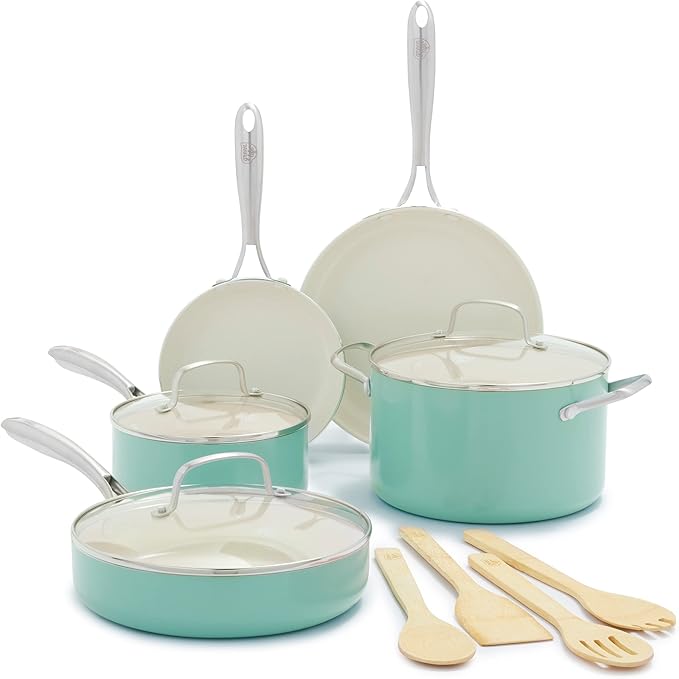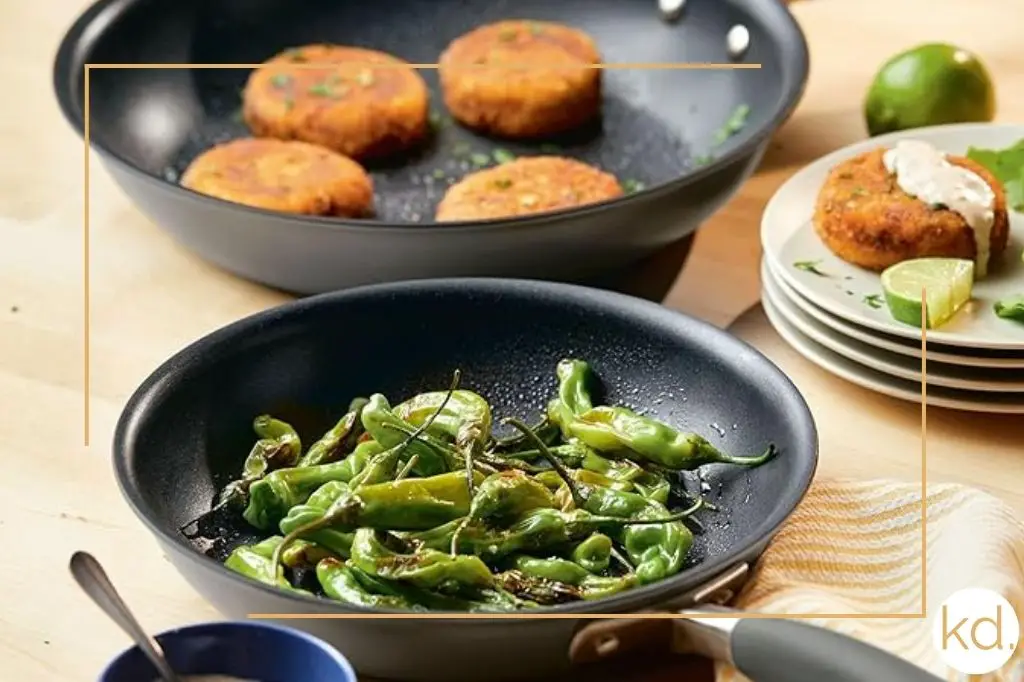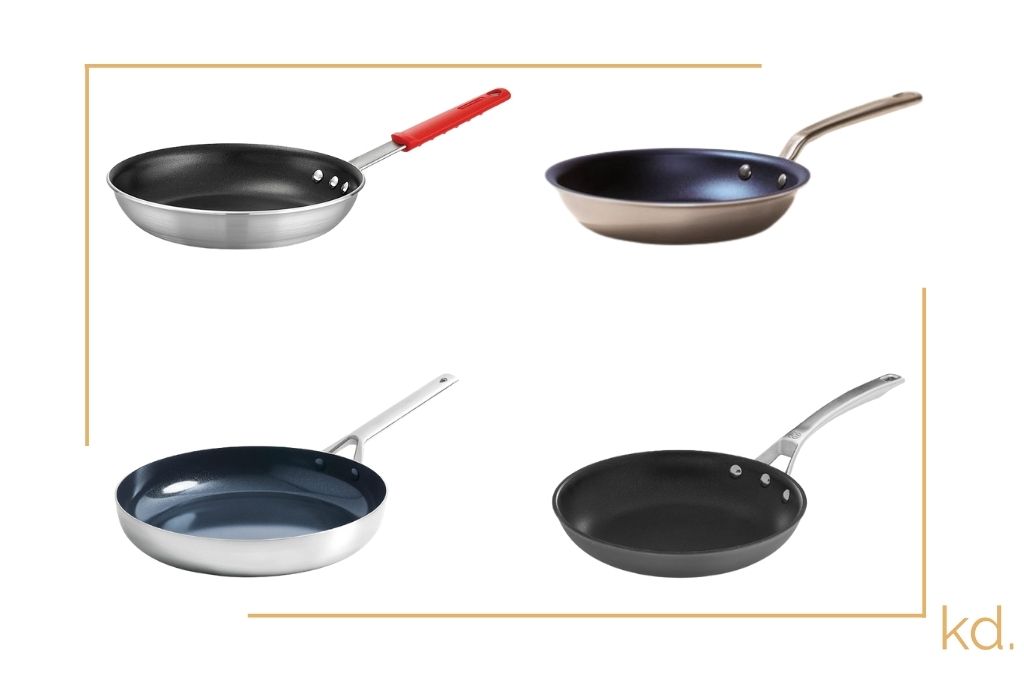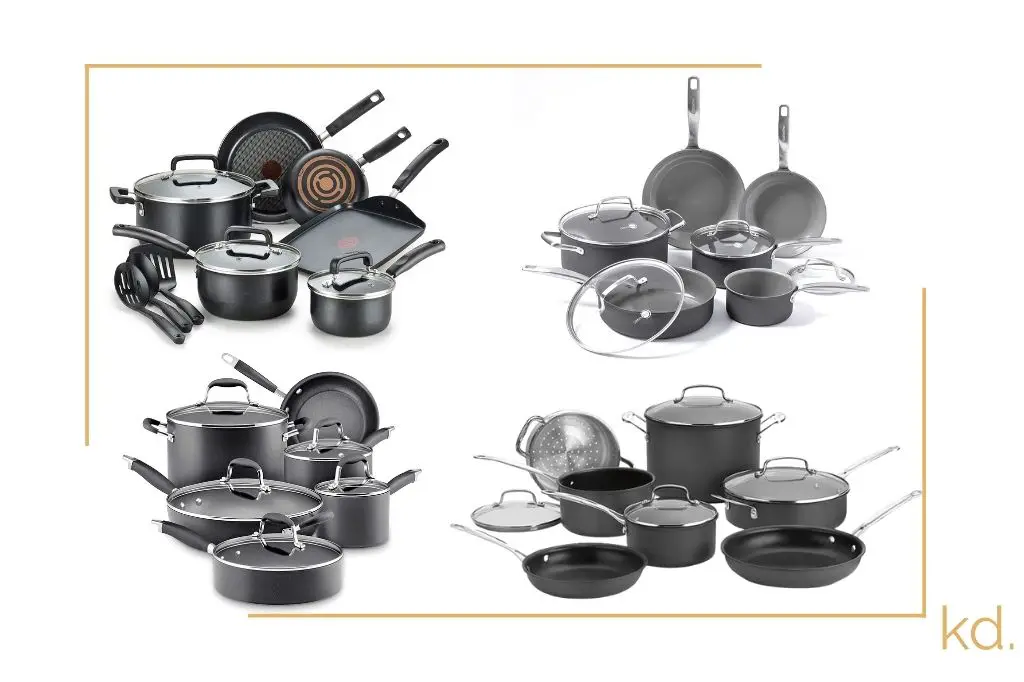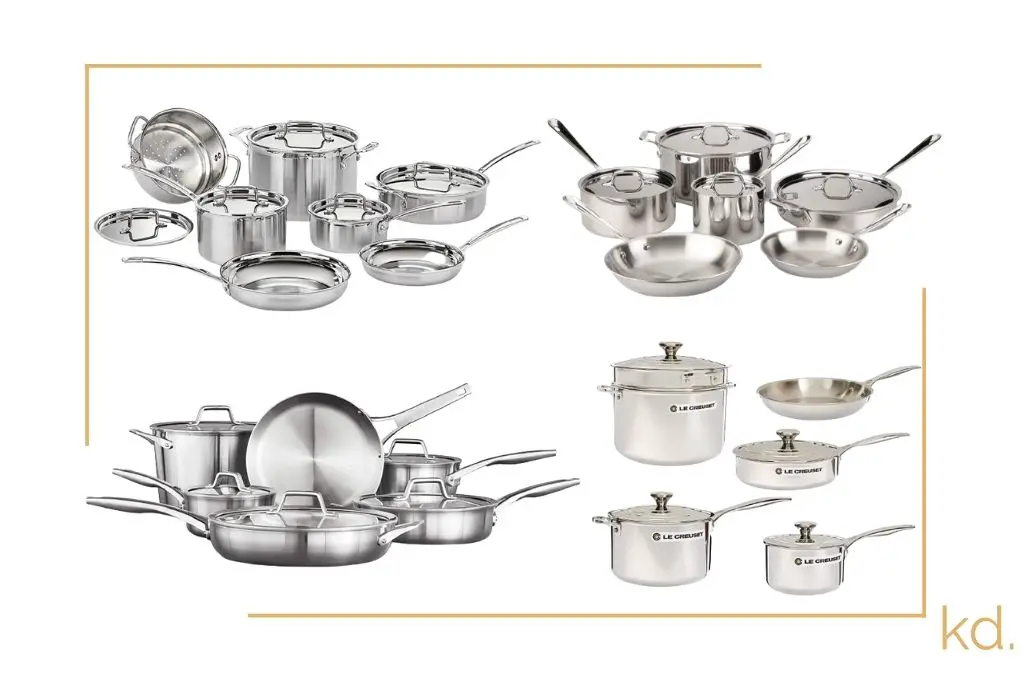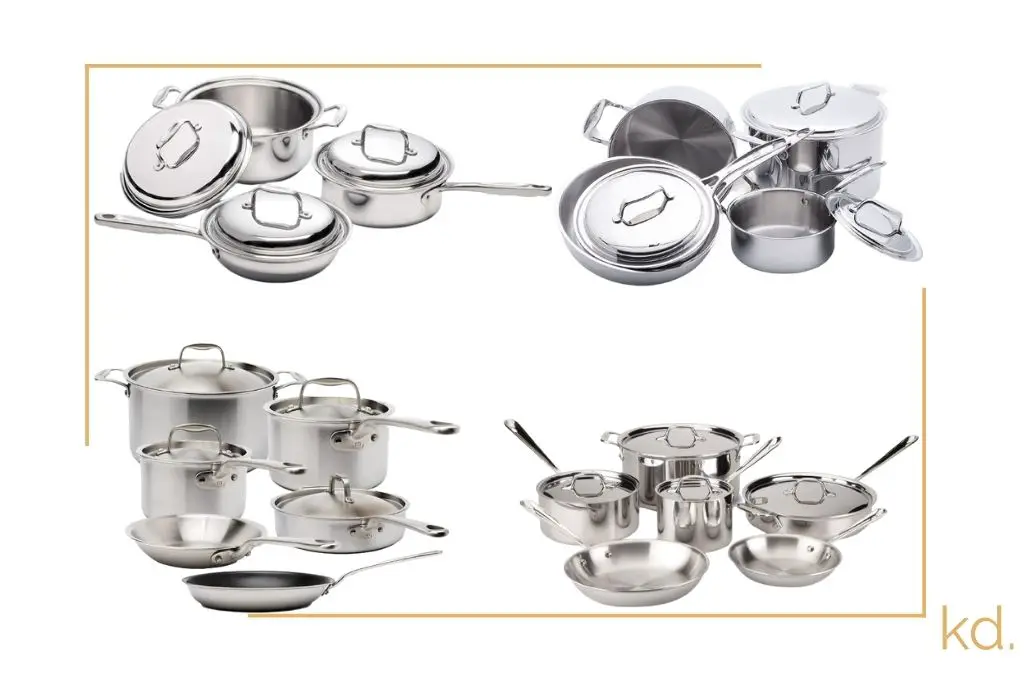Are you tired of worrying about potentially harmful chemicals leaching into your food? Looking to upgrade your kitchen with cookware that’s both safe and stylish? You’ve come to the right place! Today, we’re diving deep into the world of 100% ceramic cookware – the non-toxic, environmentally friendly alternative that’s taking health-conscious kitchens by storm.
Unlike conventional non-stick cookware that often contains PFOA, PTFE, and other concerning chemicals, pure ceramic cookware offers a naturally non-stick surface without the health worries. Plus, these gorgeous pieces often double as serving dishes, taking you straight from stovetop to table with ease.
In this comprehensive guide, we’ll explore the top 10 100% ceramic cookware options available online, break down their pros and cons, and give you all the information you need to make the perfect choice for your cooking style and budget. We’ll also include a handy buying guide to help you navigate the ceramic cookware landscape like a pro.
Let’s get cooking!
What Exactly Is 100% Ceramic Cookware?
Before we jump into the reviews, let’s clarify what we mean by “100% ceramic cookware.” This isn’t your ceramic-coated metal cookware (which has its own benefits); we’re talking about cookware made entirely from ceramic materials – usually clay that’s been kiln-fired at extremely high temperatures.
Pure ceramic cookware contains no metals, no PTFE (Teflon), no PFOA, and no other potentially harmful chemicals. It’s about as natural as cookware gets, which is why it’s become so popular among health-conscious cooks.
Now, let’s dive into our top picks!
Top 10 100% Ceramic Cookware Options
1. Xtrema Pure Ceramic Cookware
Xtrema stands as the gold standard in 100% ceramic cookware. Manufactured by Ceramcor, these pieces are completely metal-free and made from inorganic minerals, clay, and water. The glossy black finish gives them a sleek, modern look, while the versatility is unmatched – use them on stovetops, in ovens, microwaves, and even on the grill.
Pros:
- Truly 100% ceramic construction with zero metals
- Extremely versatile: stovetop, oven, microwave, freezer, and dishwasher safe
- Non-reactive surface that won’t leach chemicals or flavors
- Scratch-resistant and exceptionally durable
- Retains heat beautifully for energy-efficient cooking
- Available in various pieces and sets to suit different needs
- Comes with silicon handle covers for safe handling
Cons:
- Premium price point (though justified by the quality and durability)
- Heavier than some other cookware options
- Requires proper care and handling to prevent chipping
- Heats more slowly than metal alternatives
Price Range: $$$$ (High-end)
2. Emile Henry Flame Ceramic Cookware
Hailing from Burgundy, France, Emile Henry creates stunning flame-top ceramic cookware using their proprietary Flame® technology. These pieces feature Burgundy clay with a uniquely formulated glaze that allows them to withstand direct flame and high heat. The result is beautiful cookware that moves seamlessly from stovetop to table, available in a range of gorgeous colors.
Pros:
- Exceptional heat retention and distribution
- Safe for use on gas, electric, and halogen stovetops
- Oven safe up to 930°F (500°C)
- Resistant to thermal shock – can go from freezer to oven
- Stunning color options that brighten any kitchen
- Naturally non-stick glazed surface
- 10-year warranty
Cons:
- Not recommended for induction cooktops without an adapter
- Some users report occasional chipping with heavy use
- Premium pricing
- Limited range of cookware pieces compared to full sets
Price Range: $$$-$$$$ (Upper mid-range to high-end)
3. Pyrex Ceramic Cook & Bake Set
Pyrex has long been trusted in kitchens worldwide, and their ceramic line continues this tradition of quality. Made from high-fired ceramic and featuring a non-porous surface, these versatile pieces transition easily from oven to table. The pure white finish with simple lines offers timeless style that fits any kitchen aesthetic.
Pros:
- Very affordable entry point into ceramic cookware
- Oven, microwave, and freezer safe
- Non-porous surface doesn’t absorb food odors, flavors, or stains
- Easy to clean (dishwasher safe)
- Attractive design that works well for serving
- Available in sets for better value
Cons:
- Not stovetop safe (oven use only)
- Less durable than premium options
- Limited heat resistance compared to specialized stovetop ceramics
- Primarily bakeware rather than cookware
Price Range: $ (Budget-friendly)
4. Caraway Home Ceramic Cookware Set
Though technically ceramic-coated rather than 100% ceramic, Caraway deserves mention as it offers a mineral-based ceramic coating that’s free of PTFE, PFOA, and other potentially harmful chemicals. Their cookware features an aluminum core with ceramic coating, offering excellent heat distribution with eco-friendly benefits. Their sets come in contemporary colors with thoughtful storage solutions.
Pros:
- Excellent heat distribution
- Non-toxic ceramic coating
- Works on all stovetop types, including induction
- Comes with innovative storage solutions
- Modern aesthetic with beautiful color options
- Relatively lightweight compared to 100% ceramic options
Cons:
- Not 100% ceramic (ceramic coating on aluminum core)
- Higher price point for ceramic-coated (rather than pure ceramic)
- Some users report the non-stick properties diminish over time
- Requires careful handling to maintain the coating
Price Range: $$$ (Mid-to-high end)
5. Corningware Ceramic Bakeware
A classic name in ceramic cookware, Corningware offers stoneware pieces that excel in the oven. While not suitable for stovetop use, their baking dishes, casseroles, and ramekins are kitchen workhorses for anyone who does significant oven cooking. The iconic white pieces with blue detailing are instantly recognizable, though they offer many designs now.
Pros:
- Excellent heat retention for even baking
- Microwave, oven, refrigerator, and freezer safe
- Non-porous surface doesn’t absorb food odors or flavors
- Dishwasher safe for easy cleaning
- Attractive enough to double as serving dishes
- More affordable than stovetop ceramic options
- Trusted brand with long history
Cons:
- Not for stovetop use
- Can chip or crack if dropped or subjected to sudden temperature changes
- Heavier than glass bakeware alternatives
- Limited primarily to baking applications
Price Range: $-$$ (Budget to mid-range)
6. Le Creuset Stoneware Collection
While Le Creuset is best known for their enameled cast iron, their stoneware line offers excellent 100% ceramic options for oven use. Made from high-fired stoneware with a durable enamel finish, these pieces resist chipping and cracking while providing superior heat distribution and retention. Available in Le Creuset’s signature rainbow of color options.
Pros:
- Exceptional quality and durability
- Superior heat retention for even cooking
- Non-porous enamel finish resists odors, staining, and flavor absorption
- Safe for oven, microwave, freezer, and dishwasher
- Stunning color options to match any kitchen
- Iconic brand with excellent reputation
Cons:
- Premium price point
- Not designed for stovetop use (oven only)
- Heavier than some alternatives
- Can chip if handled roughly
Price Range: $$$-$$$$ (Upper mid-range to high-end)
7. Staub Ceramic Bakeware Collection
From the renowned French cookware manufacturer comes a line of ceramic bakeware that combines functionality with elegant design. Made from vitreous ceramic that’s fired at extremely high temperatures, Staub’s ceramic pieces offer exceptional heat distribution and retention. The glass porcelain finish comes in various vibrant colors and resists scratching.
Pros:
- Exceptional heat retention and distribution
- Oven safe up to 572°F (300°C)
- Microwave, freezer, and dishwasher safe
- Beautiful design that transitions well to the table
- Highly resistant to thermal shock
- Elegant color options
- Trusted culinary brand
Cons:
- Premium pricing
- Not suitable for stovetop use
- Limited to baking applications
- Heavier than some alternatives
Price Range: $$$ (Mid-to-high end)
8. GreenLife Artisan Healthy Ceramic Cookware
GreenLife offers ceramic-coated aluminum cookware that, while not 100% ceramic, provides a healthier alternative to traditional non-stick without the full price of pure ceramic. Their Thermolon ceramic coating is derived from sand and contains no PFAS, PFOA, lead, or cadmium. The colorful, lightweight designs make them popular among cooks looking for eco-friendly options on a budget.
Pros:
- Affordable entry point into ceramic cooking
- Lightweight and easy to handle
- Works on all stovetops except induction
- Available in bright, fun colors
- Good heat distribution
- Free of PFAS, PFOA, lead, and cadmium
Cons:
- Not 100% ceramic (ceramic coating on aluminum)
- Less durable than pure ceramic options
- Non-stick properties may diminish over time
- Not suitable for high-heat cooking
Price Range: $ (Budget-friendly)
9. Cook on Clay Flameware
For the purist seeking artisanal quality, Cook on Clay creates handmade flameware pottery designed specifically for cooking. These pieces are made from a special clay formulation that can withstand direct heat, making them suitable for stovetop, oven, and even open-flame cooking. Each piece is unique with subtle variations in the earthy finish.
Pros:
- Truly artisanal, handmade pieces
- 100% natural materials
- Excellent heat retention for slow, even cooking
- Safe for stovetop, oven, and microwave
- Unique aesthetic with natural variations
- Supporting small-scale artisan production
- Excellent for slow-cooking methods
Cons:
- Limited availability and production
- Higher price point reflecting handmade quality
- Requires more careful handling than mass-produced options
- Less standardized than factory-made alternatives
- May not work on all stovetop types
Price Range: $$$$ (High-end)
10. BergHOFF Geminis Ceramic Bakeware
BergHOFF combines modern design with practical functionality in their Geminis ceramic line. These pieces feature a contemporary aesthetic with clean lines and neutral colors. Made from high-fired ceramic, they offer good heat distribution and retention while being suitable for oven, microwave, and table use.
Pros:
- Modern, attractive design
- Good heat distribution and retention
- Oven and microwave safe
- Scratch-resistant glazed surface
- Dishwasher safe for easy cleanup
- Relatively affordable compared to premium brands
- Good mid-range option
Cons:
- Not suitable for stovetop use
- Less renowned than some competing brands
- Limited color options
- Not as widely available as other brands
Price Range: $$ (Mid-range)
Comparison Table: Top 10 100% Ceramic Cookware Options
| Brand | Type | Stovetop Safe | Oven Safe | Microwave Safe | Dishwasher Safe | Price Range | Best For |
|---|---|---|---|---|---|---|---|
| Xtrema | 100% Ceramic | Yes (All Types) | Yes (Up to 2500°F) | Yes | Yes | $$$$ | All-purpose cooking, Health-conscious cooks |
| Emile Henry | 100% Ceramic | Yes (Gas, Electric, Halogen) | Yes (Up to 930°F) | Yes | Yes | $$$-$$$$ | Stovetop-to-oven cooking, Gourmet cooks |
| Pyrex Ceramic | 100% Ceramic | No | Yes (Up to 550°F) | Yes | Yes | $ | Baking, Budget-conscious cooks |
| Caraway Home | Ceramic-Coated | Yes (All Types) | Yes (Up to 550°F) | No | Hand wash recommended | $$$ | Modern kitchens, Stovetop cooking |
| Corningware | 100% Ceramic | No | Yes (Up to 450°F) | Yes | Yes | $-$$ | Casseroles, Baking |
| Le Creuset Stoneware | 100% Ceramic | No | Yes (Up to 500°F) | Yes | Yes | $$$-$$$$ | Baking, Serving, Gourmet cooks |
| Staub Ceramic | 100% Ceramic | No | Yes (Up to 572°F) | Yes | Yes | $$$ | Baking, Entertaining |
| GreenLife Artisan | Ceramic-Coated | Yes (No Induction) | Yes (Up to 350°F) | No | Yes | $ | Budget cooking, Everyday use |
| Cook on Clay | 100% Ceramic | Yes (Depends on piece) | Yes (Temperature varies) | Yes | Hand wash only | $$$$ | Artisanal cooking, Slow food enthusiasts |
| BergHOFF Geminis | 100% Ceramic | No | Yes (Up to 450°F) | Yes | Yes | $$ | Baking, Modern kitchens |
Buyers Guide: How to Choose the Right Ceramic Cookware
Understanding Different Types of Ceramic Cookware
When shopping for ceramic cookware, you’ll encounter two main categories:
100% Ceramic or Pure Ceramic:
- Made entirely from clay and minerals fired at high temperatures
- Contains no metal at all
- Generally heavier than other cookware
- Excellent heat retention
- Typically more expensive
- Can be used in ovens, microwaves, and sometimes on stovetops (check manufacturer specifications)
Ceramic-Coated:
- Metal core (usually aluminum) coated with a ceramic layer
- Lighter weight than pure ceramic
- Better heat conduction
- Less expensive than pure ceramic
- Cannot be used in microwaves
- Coating can eventually wear off
For this guide, we’ve focused primarily on 100% ceramic options, with a couple of ceramic-coated alternatives included for comparison.
Key Factors to Consider When Buying Ceramic Cookware
1. Intended Use
Before purchasing ceramic cookware, consider how you plan to use it:
- Do you need stovetop-safe pieces, or primarily bakeware?
- Will you be transferring from stovetop to oven?
- Do you want pieces that double as serving dishes?
- What cooking methods do you use most often?
Different ceramic cookware excels at different applications, so clarifying your needs will narrow down your options.
2. Stovetop Compatibility
Not all ceramic cookware is created equal when it comes to stovetop use:
- Many pure ceramic pieces are oven-only
- Some specialty ceramics (like Xtrema and Emile Henry) are designed for stovetop use
- If you have an induction cooktop, your options are more limited
- Ceramic-coated options often work on all stovetops
Always check the manufacturer’s specifications regarding stovetop compatibility.
3. Heat Tolerance
Different ceramic products can withstand different temperature ranges:
- Pure ceramic typically handles higher temperatures than ceramic-coated options
- Oven-safe temperatures range from 350°F to over 2000°F depending on the product
- Higher heat tolerance generally indicates better quality and durability
Consider the cooking methods you use and their typical temperature requirements.
4. Weight and Handling
Pure ceramic cookware is generally heavier than other materials:
- Consider whether you can comfortably lift and handle heavier pieces
- Check for ergonomic handles and secure grips
- Some brands offer silicone handle covers for safer handling
- Ceramic-coated options are typically lighter if weight is a concern
5. Maintenance Requirements
Most ceramic cookware requires special care:
- Some pieces are dishwasher safe, while others require hand washing
- Pure ceramic can chip or crack if dropped or subjected to thermal shock
- Non-stick properties may require specific cleaning techniques to maintain
- Consider whether you’re willing to follow specific care instructions
6. Aesthetics
One advantage of ceramic cookware is its beautiful appearance:
- Consider whether you’ll use the pieces for serving at the table
- Choose colors and designs that complement your kitchen and dining style
- Some brands offer consistent color lines across products for a cohesive look
7. Budget
Ceramic cookware spans a wide price range:
- Pure ceramic options tend to be more expensive
- Handmade artisanal pieces command the highest prices
- Ceramic-coated aluminum offers a more budget-friendly entry point
- Consider investing in fewer high-quality pieces rather than an inexpensive set that may not last
8. Warranty and Company Reputation
Quality ceramic cookware is an investment:
- Look for products with solid warranties (some offer 10+ years)
- Research company longevity and customer service reputation
- Read user reviews with an eye for durability and long-term satisfaction
Caring for Your Ceramic Cookware
To get the most out of your ceramic cookware investment, follow these care tips:
1. Breaking In New Cookware
- Before first use, wash with warm, soapy water
- For pure ceramic stovetop pieces, consider “seasoning” by rubbing with a small amount of oil
- Follow any specific manufacturer break-in instructions
2. Cooking Tips
- Always start with low to medium heat and increase gradually
- Use wooden, silicone, or nylon utensils to avoid scratching
- Don’t place hot ceramic directly on cold surfaces or vice versa to prevent thermal shock
- Allow ceramic to cool before washing
3. Cleaning and Maintenance
- Hand washing is generally recommended, even for dishwasher-safe pieces
- For stuck-on food, soak in warm water before cleaning
- Avoid abrasive cleaners or steel wool, which can damage the surface
- For stains, try a paste of baking soda and water
4. Storage
- Store pieces with space between them or use protective dividers
- For stacking, place soft cloths between pieces to prevent scratching
- Hang only if handles are securely attached and designed for hanging
Is Ceramic Cookware Right for You?
Ceramic cookware offers many benefits but isn’t for everyone. Consider these factors:
You might love ceramic cookware if:
- Health and environmental concerns are priorities for you
- You cook at low to medium temperatures most of the time
- You value attractive cookware that doubles as serveware
- You’re patient with slower, more even cooking
- You’re willing to handle cookware with extra care
You might want to consider alternatives if:
- You frequently cook at very high temperatures
- You prefer lightweight cookware that’s easy to handle
- You’re rough with your cookware or have limited storage space
- You need cookware that heats up extremely quickly
The Environmental and Health Benefits of Ceramic Cookware
One of the main reasons consumers turn to 100% ceramic cookware is for its environmental and health benefits:
Environmental Benefits:
- Made from abundant natural materials (clay and minerals)
- Often produced using traditional methods with lower environmental impact
- Extremely durable, reducing the need for frequent replacement
- Free from the problematic chemicals associated with some non-stick coatings
- Many ceramic pieces are biodegradable at end-of-life
Health Benefits:
- Non-reactive surface doesn’t leach chemicals into food
- No PFOA, PTFE, or other potentially harmful substances
- Naturally non-stick when properly used and maintained
- No metallic taste transfer to acidic foods
- Safe at high temperatures without releasing toxins
Frequently Asked Questions About Ceramic Cookware
Q: Is ceramic cookware completely non-stick? A: Pure ceramic cookware has naturally non-stick properties, but it’s not as slick as Teflon or other chemical non-stick coatings. Proper preheating, using sufficient oil, and maintaining the surface properly will provide good non-stick performance. Ceramic-coated cookware typically offers better non-stick properties than 100% ceramic, though these properties may diminish over time.
Q: Can I use ceramic cookware on an induction cooktop? A: Most 100% ceramic cookware doesn’t work on induction cooktops since ceramic doesn’t have magnetic properties. Some ceramic-coated options with ferromagnetic metal bases will work. Alternatively, you can purchase an induction disc/converter plate designed to allow non-induction compatible cookware to work on induction stovetops.
Q: How long does ceramic cookware last? A: High-quality 100% ceramic cookware can last decades with proper care. Ceramic-coated cookware typically has a shorter lifespan of 3-5 years before the non-stick properties significantly diminish, though the base remains usable.
Q: Why is pure ceramic cookware so expensive? A: Pure ceramic cookware requires specialized clay formulations, extremely high firing temperatures, skilled craftsmanship, and rigorous quality control. The materials themselves are not expensive, but the manufacturing process is complex and energy-intensive, especially for pieces designed to withstand stovetop heat.
Q: Is ceramic cookware oven-safe? A: Yes, most ceramic cookware is oven-safe, often at very high temperatures. However, always check the manufacturer’s specifications for temperature limits. Pure ceramic typically handles higher temperatures than ceramic-coated options.
Q: Can ceramic cookware break easily? A: Quality ceramic cookware is quite durable but is susceptible to chipping or cracking if dropped or subjected to extreme temperature changes (thermal shock). It’s more fragile than metal cookware but generally quite sturdy with proper handling.
Q: Does food stick to ceramic cookware? A: With proper preheating and sufficient oil or butter, food shouldn’t stick significantly to ceramic cookware. However, it doesn’t offer the same level of non-stick performance as Teflon or similar coatings.
Q: Is ceramic cookware dishwasher safe? A: Many ceramic pieces are technically dishwasher safe, but manufacturers often recommend hand washing to extend the life of the product. Always check the specific care instructions for your pieces.
Conclusion: Making the Right Choice for Your Kitchen
Investing in 100% ceramic cookware is a commitment to healthier cooking, environmental responsibility, and often, a more mindful approach to food preparation. While it may require some adaptation if you’re switching from conventional non-stick or metal cookware, many cooks find the benefits well worth the learning curve.
When choosing ceramic cookware, prioritize how you’ll use the pieces, your stovetop compatibility, and your budget. Consider starting with one high-quality piece that suits your most common cooking needs, rather than investing in an entire set right away. This allows you to experience the benefits and care requirements before making a larger commitment.
For stovetop use, Xtrema and Emile Henry lead the pack in quality and versatility. For baking, brands like Le Creuset and Staub offer exceptional performance and durability. Budget-conscious shoppers might consider Pyrex or GreenLife as entry points into ceramic cooking.
Remember that truly 100% ceramic cookware is an investment that can last decades with proper care. The higher upfront cost often translates to better value over time, not to mention peace of mind regarding what’s coming into contact with your food.
Whether you’re motivated by health concerns, environmental impact, or simply the beautiful aesthetics of ceramic pieces, there’s a ceramic cookware option out there that’s perfect for your kitchen. Happy cooking!
